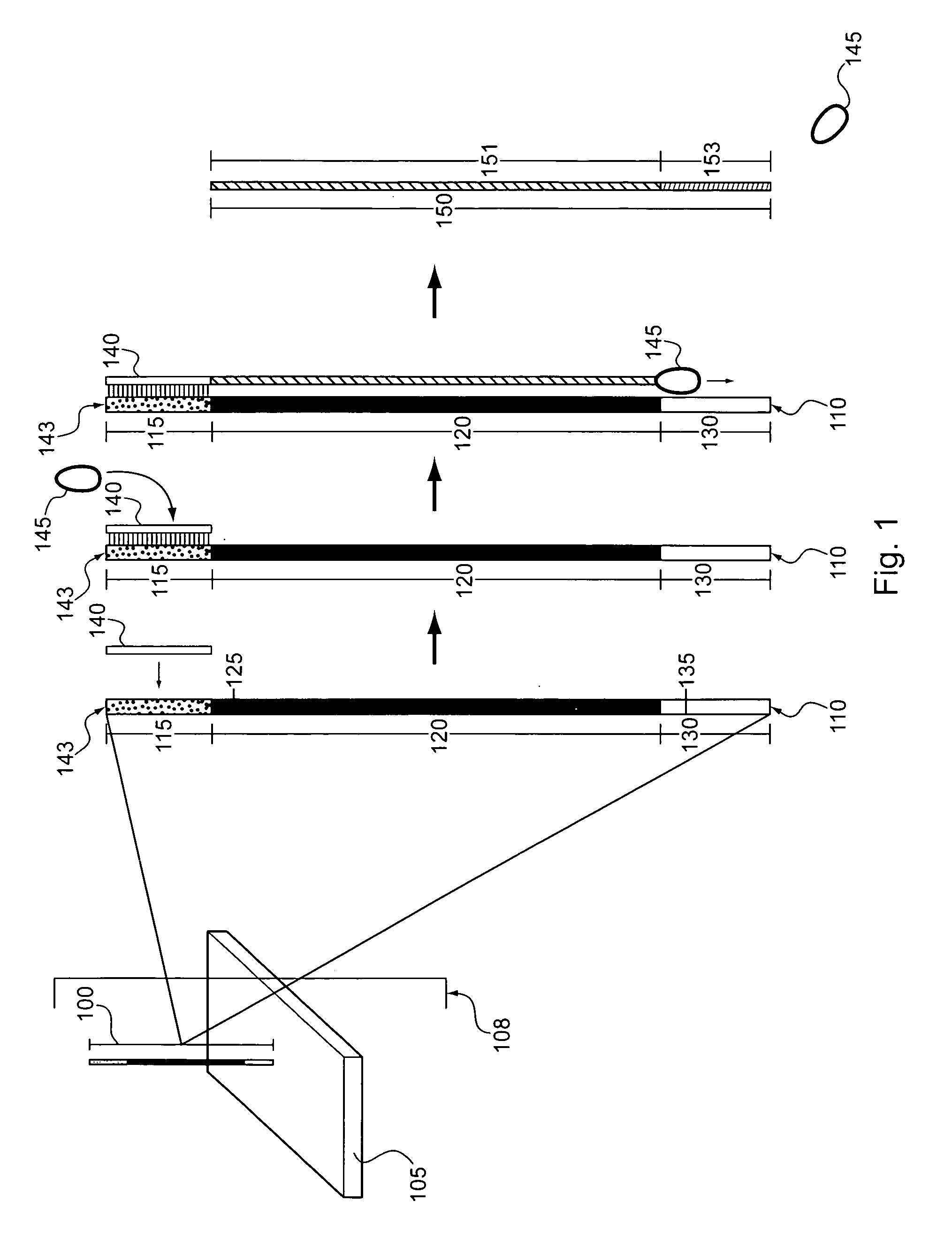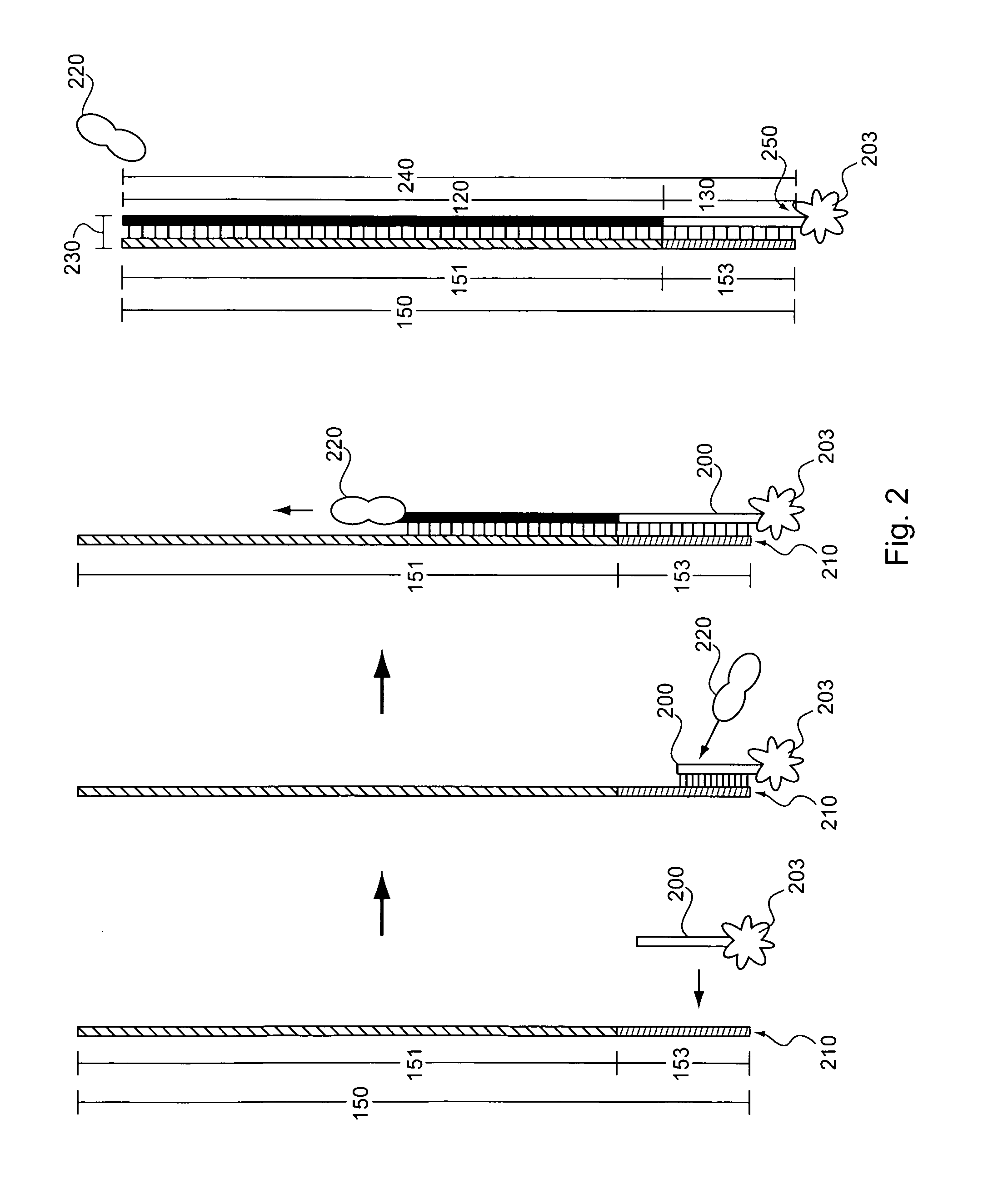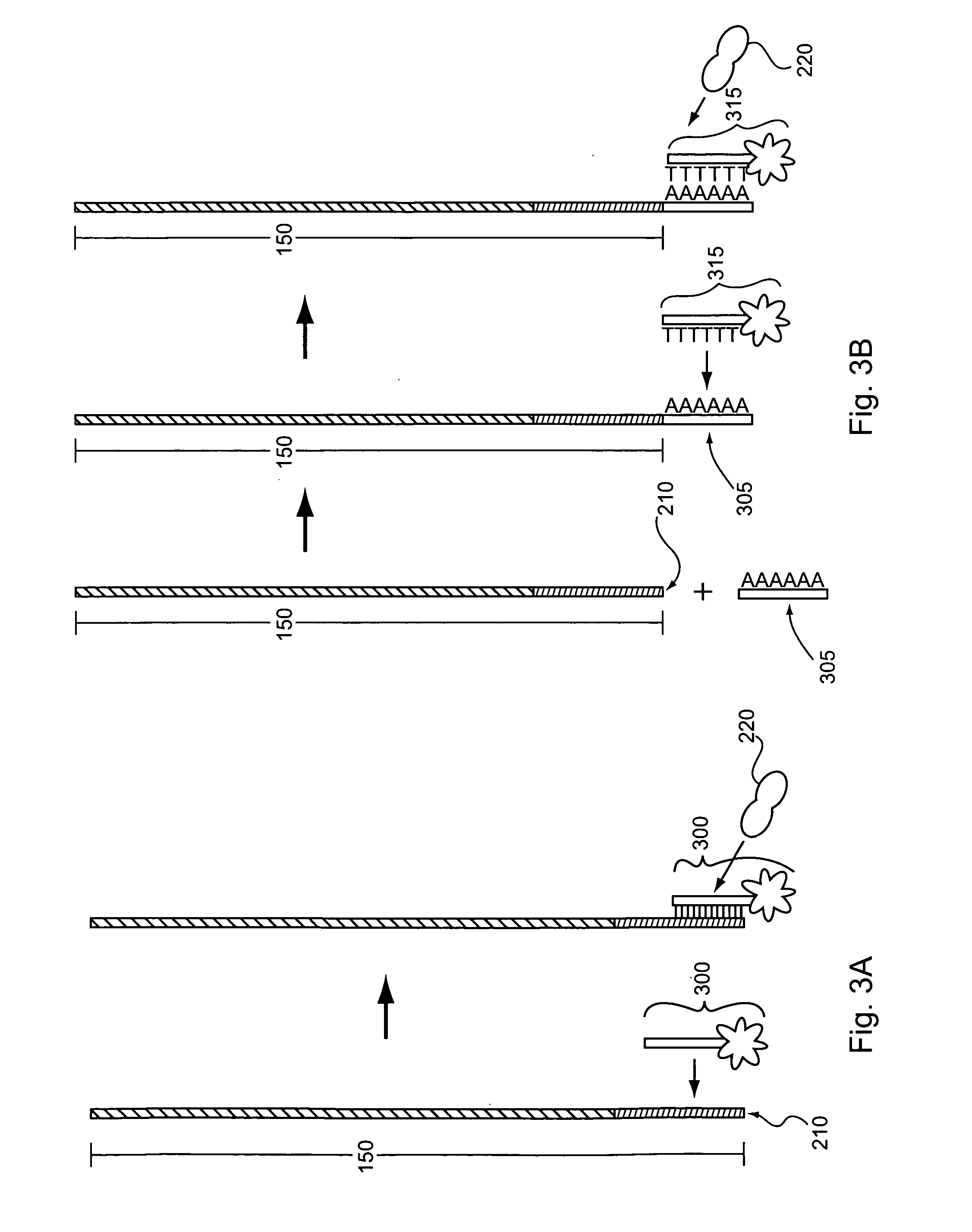GREPSEQ: An Almost Inexhaustible, Cost-Effective, High-Throughput Protocol for the Generation of Selector Sequences
- Summary
- Abstract
- Description
- Claims
- Application Information
AI Technical Summary
Benefits of technology
Problems solved by technology
Method used
Image
Examples
example 1
Using a Capture Probe Comprising a Selector Subsequence Complementary to a Subsequence in a Luciferase mRNA
[0167]Single-Stranded Nucleic Acids from Which RNAs can be Synthesized.
[0168]An example of a single-stranded nucleic acid from which RNAs can be synthesized, e.g., in preparation to produce a nucleic acid capture probe is shown below: 5′ TGCAGGGCGGACCGATCACATGAAGCAGCACGACTTCATTGCCTATAGTGAGTCGTATTA 3′ (SEQ ID NO: 4). The constant regions are depicted in bold, promoter region is underlined, and the variable selector subsequence is in italic font.
[0169]Transcription of RNAs on Solid Surface
[0170]A microarray containing 200,000 unique clusters of DNA oligonucleotides immobilized on a glass surface was purchased from Roche Nimblegen (Madison, Wis.) and hybridized overnight to a population of free oligonucleotides comprising a sequence complementary to the T7 promoter region of the immobilized nucleic acids (5′ TAATACGACTCACTATAGG 3′ (SEQ ID NO: 5)). The hybridization was performed u...
example 2
Producing Nucleic Acid Capture Probes from Biotynilated Oligos Attached to Beads
[0179]The array used in Example 2 is the same as that described in Example 1. To cleave oligos from the microarray, 35 μl of 28-30% NH4OH (Sigma catalog no. 221228-25 ml-A) is added to the array, which is then covered with a lifterslip. The array is then incubated at room temperature for two hours. Following the incubation, the liquid is removed from the array and placed in a 1.5 ml microfuge tube. The slide (e.g., the array) and the coverslip are then rinsed twice with 50 μl NH4OH, which volumes of NH4OH are then collected and also added to 1.5 ml tube. Water is added to the microfuge tube until the volume of liquid in the tube is about 1.8 ml. The liquid is then transferred to a pre-rinsed YM-3 Centricon tube and spun in a microfuge at 6,500×g for about 2 hours at room temperature (e.g., about 25° C.). Following the first centrifugation, 1 ml of water is added to the Centricon tube, and the tube is spu...
PUM
| Property | Measurement | Unit |
|---|---|---|
| Angle | aaaaa | aaaaa |
| Magnetism | aaaaa | aaaaa |
Abstract
Description
Claims
Application Information
 Login to View More
Login to View More - R&D
- Intellectual Property
- Life Sciences
- Materials
- Tech Scout
- Unparalleled Data Quality
- Higher Quality Content
- 60% Fewer Hallucinations
Browse by: Latest US Patents, China's latest patents, Technical Efficacy Thesaurus, Application Domain, Technology Topic, Popular Technical Reports.
© 2025 PatSnap. All rights reserved.Legal|Privacy policy|Modern Slavery Act Transparency Statement|Sitemap|About US| Contact US: help@patsnap.com



